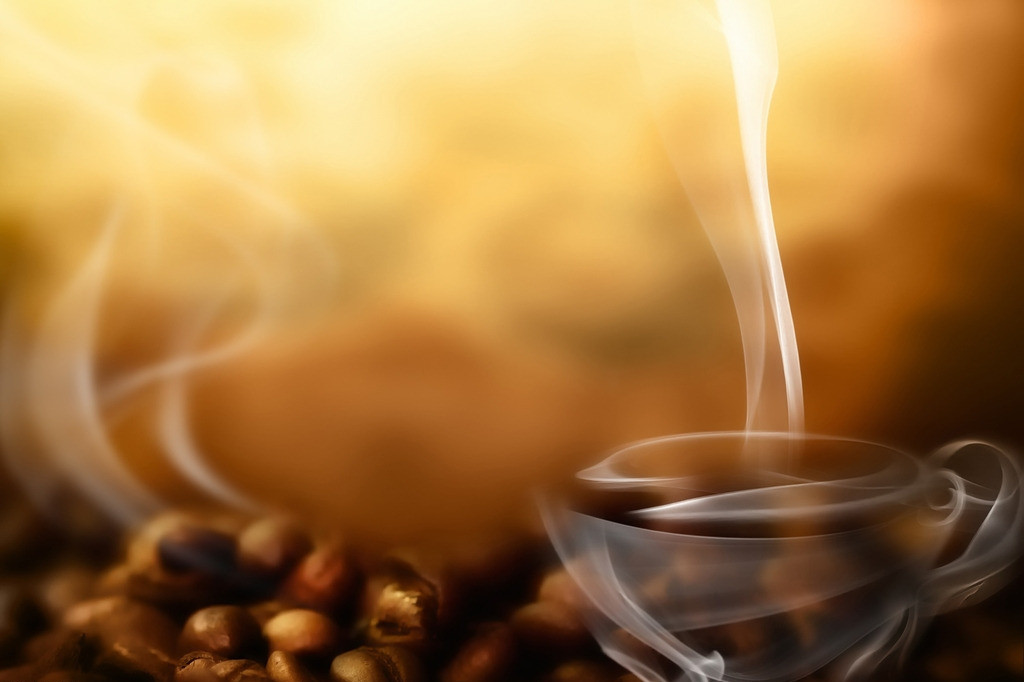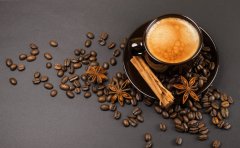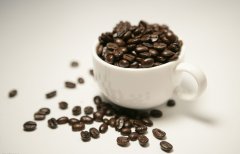The small universe in the coffee is all-inclusive.

How many substances does a cup of coffee contain? Coffee extracted by traditional and common methods such as hand brewing, Syphon, French pressure, etc., contains more than 200 minutes of substances, while when using a steam purging coffee machine and household mocha pot, because of its special extraction method, 1500 traits can be extracted in an instant. Unexpectedly, there are so many things in a glass of tasty water. The charm of coffee is made up of these different substances.
The chemical composition of coffee beans is very complex, of which carbohydrates account for the most. Coffee beans contain a variety of carbohydrates, accounting for 60% of the total weight of raw coffee beans, as well as some proteins, oils, tannins, caffeine, minerals and other trace ingredients; and variety, origin and harvest season, will affect the composition of these ingredients. The various ingredients of raw coffee beans will react in the baking process and form the unique flavor and color of all kinds of coffee beans.
1. Carbohydrate
Raw coffee beans contain 1% reducing sugar, 7% sugarcane grains, 2% pectin, starch and other polysaccharides accounting for about 15%, and the rest are about 35% cellulose. During the roasting process of raw coffee beans, most of the sucrose will be converted into scorched grain and combined with partially carbonized cellulose to form the hue and flavor of coffee. Drinking "black coffee" without sugar and milk can not only feel the bitter taste of coffee, as well as the sour and astringent taste of tannin, but also feel a touch of sweetness, which is caused by the dissolution of sugar in coffee beans.
two。 Tannic acid
After extraction, tannic acid will turn into a yellowish powder, which can easily blend into water, and after boiling, it will decompose and produce pyrosylic acid, which will make the coffee taste worse, and if it is brewed and left for several hours, the color of the coffee will become thicker than when it was just brewed, and it is also less tasty, so there is the saying that "it is best to drink it as soon as possible." It is generally believed that the duration of a cup of coffee is 10 minutes. If you want to, you can try whether the taste of the same cup of coffee is the same every minute, and 10 minutes later, the taste of the coffee will be much different from that when it was first brewed.
3. Protein
The protein content of raw beans is about 13%, and the amino acids in them vary during baking. Some will react with sugars to form the unique color and smell of baked products. Although coffee beans are rich in protein, but in the brewing process, the protein will not dissolve out, so no matter how much coffee is drunk, the ingredient is still limited, but the coffee grounds has a high protein content, which is worth reusing.
4. Mineral substance
The content is about 4%, mainly potassium, phosphorus, calcium, magnesium, sulfur and other substances. As the proportion is very small, it has little effect on the quality and flavor of coffee, which will only bring a little astringency to the coffee.
5. Sugar content
Without sugar, you will not only feel the bitterness of caffeine and the sour taste of tannin, but also feel sweet, which is caused by the sugar contained in the coffee itself. After baking, most of the sugar will be converted to caramel, giving the coffee a unique brown.
6. Caffeine
The caffeine content varies with different varieties of coffee beans. Generally speaking, coffee beans contain about 1: 2 caffeine. A cup of coffee (about 10 grams of coffee beans) contains 100 to 200 milligrams of caffeine. Caffeine is the most noticeable ingredient of all the ingredients of coffee because of its particularity. its properties are the same as theophylline in cocoa and theophylline in tea. During the baking process, the composition of caffeine is basically unaffected. Caffeine has a bitter taste and is the main source of bitterness in coffee. It is irritating to the human body, making some lovers both love and fear, so there are low-caffeine products on the market to meet the needs of different coffee groups.
7. Volatile components
The smell and aroma of coffee are mainly produced in roasting, coffee raw beans can not smell what taste.
Some people say that when the coffee is first brewed for a moment, the aroma of the room floats, which is equal to half of the coffee already drunk. Coffee aroma is an important feature of its attractive, you can not drink coffee, but certainly can not resist its aroma temptation. The volatile components are the basic elements that bring aroma to the coffee. At present, coffee flavor mixtures are known to contain more than 300 compounds, but most of them are very low.
8. Oil and fat
Raw coffee beans contain about 13% oil. During the roasting of coffee beans, the content of lipids decreases accordingly, forming part of the volatile components of coffee, which is closely related to the aroma of coffee. In the process of storage, cooked beans often produce bad smell due to deterioration, which affects the value and flavor of coffee beans. This is because the lipids in beans will undergo chemical reactions such as oxidation and decomposition when they come into contact with the air, resulting in some compounds with bad odors. Therefore, coffee beans in storage, to avoid contact with the air, in order to maintain quality. But it is not good to vacuum, the coffee bean itself will exhale some gas, in the vacuum environment, the bean will still be mixed with some gas, affecting the taste, so the better way to preserve is to put it in a special coffee bag with an one-way exhaust valve.
9. Crude fiber
The fiber of raw beans will be carbonized after baking, which combines with the caramelization of sugar to form the hue of coffee, but the fiber turned into powder will have a considerable impact on the flavor of coffee. So we don't encourage you to buy powdered coffee beans because you can't taste the flavor of the coffee.
10. Fragrance; fragrance
Aroma is the life of coffee quality, and it can best represent the coffee production process and baking technology, as well as the climate, elevation, variety, refined treatment, harvest, storage, and the appropriateness of baking technology in the consuming country. The results of gas chromatography showed that the aroma of coffee was composed of acid, alcohol, acetaldehyde, ketone, ester, sulfur compound, phenol, nitrogen compound and nearly hundreds of volatile components. Therefore, the disappearance of fragrance means that the quality is getting worse, and the relationship between aroma and quality is very close.
The main chemical constituents of raw coffee beans
Component content (%)
Carbohydrate 60.0
Reducing sugar 1.0
Sucrose 7.0
Pectin 2.0
Starch 10.0
Garrison polysaccharide 5.0
Hemicellulose 15.0
Holocellulose 18.0
Lignin 2.0
Oil 13.0
Protein (Nylon 6.25) 13.0
Ash (oxide) 4.0
Tannic acid 7.0
N-methyl nicotinic acid (soluble) 1.0
Caffeine (soluble) (Arablica 1.0% domestic Robusta 2.0%) 1.0 soluble 2.0
Important Notice :
前街咖啡 FrontStreet Coffee has moved to new addredd:
FrontStreet Coffee Address: 315,Donghua East Road,GuangZhou
Tel:020 38364473
- Prev

Master the coffee, milk and foam skills of the three major milk cafes
To discuss Italian coffee, you can start with the ratio of coffee to milk. Some people think that espresso is too strong and worry that too much caffeine will affect sleep or health, so they choose French coffee, milk coffee or caffe Latte. But in fact, a cup of Espresso uses about 7 to 18 grams to make 30cc coffee, a cappuccino or latte.
- Next

Coffee is common knowledge.
Some people say that every cup of coffee is actually only 50% coffee beans and sugar, and the other 50% is a complex composition called feeling. Some people think that no matter how coffee is brewed, the coffee powder that has been brewed once has to be discarded, and they will feel that it is a waste. Especially some expensive coffee, coffee powder to brew many times
Related
- Beginners will see the "Coffee pull flower" guide!
- What is the difference between ice blog purified milk and ordinary milk coffee?
- Why is the Philippines the largest producer of crops in Liberia?
- For coffee extraction, should the fine powder be retained?
- How does extracted espresso fill pressed powder? How much strength does it take to press the powder?
- How to make jasmine cold extract coffee? Is the jasmine + latte good?
- Will this little toy really make the coffee taste better? How does Lily Drip affect coffee extraction?
- Will the action of slapping the filter cup also affect coffee extraction?
- What's the difference between powder-to-water ratio and powder-to-liquid ratio?
- What is the Ethiopian local species? What does it have to do with Heirloom native species?

